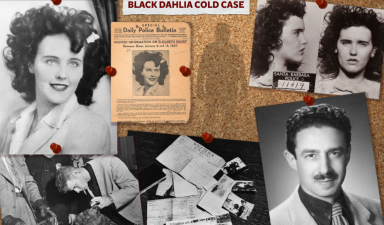The Basics of Serial Killers
Most people perceive serial killers as lunatics or maniacs with low moral character. In reality, however, most serial killers appear normal. Some are quite charming, and some, like the famous serial killer Ted Bundy, are highly educated, creating the illusion of being approachable. Most serial killers avoid any association with their behavior until they are apprehended. Some also suffer from severe mental illness or are extremely solitary, living in near isolation. There are many theories about the causes of serial killer psychology. Some serial killers have been attributed to childhood abuse. Others, through brain scans, have discovered differences in the brain structure of some serial killers compared to the average person. This has sparked even greater controversy, suggesting that serial killers can be identified early on. The defining characteristic of serial killers is their fixed nature. Their motives, patterns, and victims are often unchanging. This is because serial killers kill to fulfill a fixed ideal. This goal might be related to one or more individuals' sexuality, rights, or even survival, or it might simply be a distorted moral or cultural concept, often disconnected from reality. Like other criminals, serial killers devise countless justifications for their actions, and they must periodically revisit their goals. Their killing patterns are also almost always fixed and difficult to change.

In his new book, Why We Love Serial Killers, American criminologist Dr. Scott Byrne attempts to unravel this mystery.
He says, "My question is: What lessons can we learn from killers? And how much do we know about ourselves? People are drawn to understanding the dark side, which is part of life." Delving into the inner world of a serial killer holds a strong allure for many. Common warning signs of serial killers include bedwetting, animal cruelty, and arson. This theory, known as the "McDonald Triad Plus," originated in a 1963 study by psychiatrist John M. McDonald, based on 100 patients with violent behavior. However, subsequent research refuted this theory, arguing that McDonald's study was inadequately designed and sampled too small, and that the aforementioned childhood traits were insufficiently predictive of later violent behavior.
Currently, there's no single way to determine how someone develops into a serial killer. The FBI+ report notes that many factors influence human behavior, just as it's impossible to list all the reasons someone decides to marry, or all the reasons someone becomes a serial killer.
Extreme Violence, Extreme Thrills
The high number of serial killers in the United States is closely linked to its high rate of violent crime. Some killers employ brutal and bizarre methods, attracting attention and ultimately gaining fame. Imagine a time when the news is filled with reports of shootings. If a new incident occurs and the victim is still injured by a gun, people's reaction will inevitably become numb. However, if the killer stabbed the victim with a knife, tortured, raped, or even cannibalized the victim, it will definitely stand out and become a public topic.
Rachel Penman, manager of the National Museum of Crime and Corrections, said, "I'm immune to gun violence. But if someone stabbed me, I would be physically and mentally shocked. It's a different experience. Although the two crimes are the same, the actual feelings are different." Professor Schmid also stated, "We've essentially lost the ability to be startled, and it takes extremely extreme crimes to restore that capacity."
Famous serial killers are famous precisely for their extreme nature. Some are known for their brutal methods, such as the renowned mass murderer Dennis Rader, who called himself the "BTK Killer," meaning "kidnap, torture, kill." Others are known for their sheer madness, like the "Zodiac Killer+," who, after each crime, would send a letter to the media, leaving a code and clues, challenging the police. These lurid details captivate the public, and the desire for answers keeps the hype aliv.







